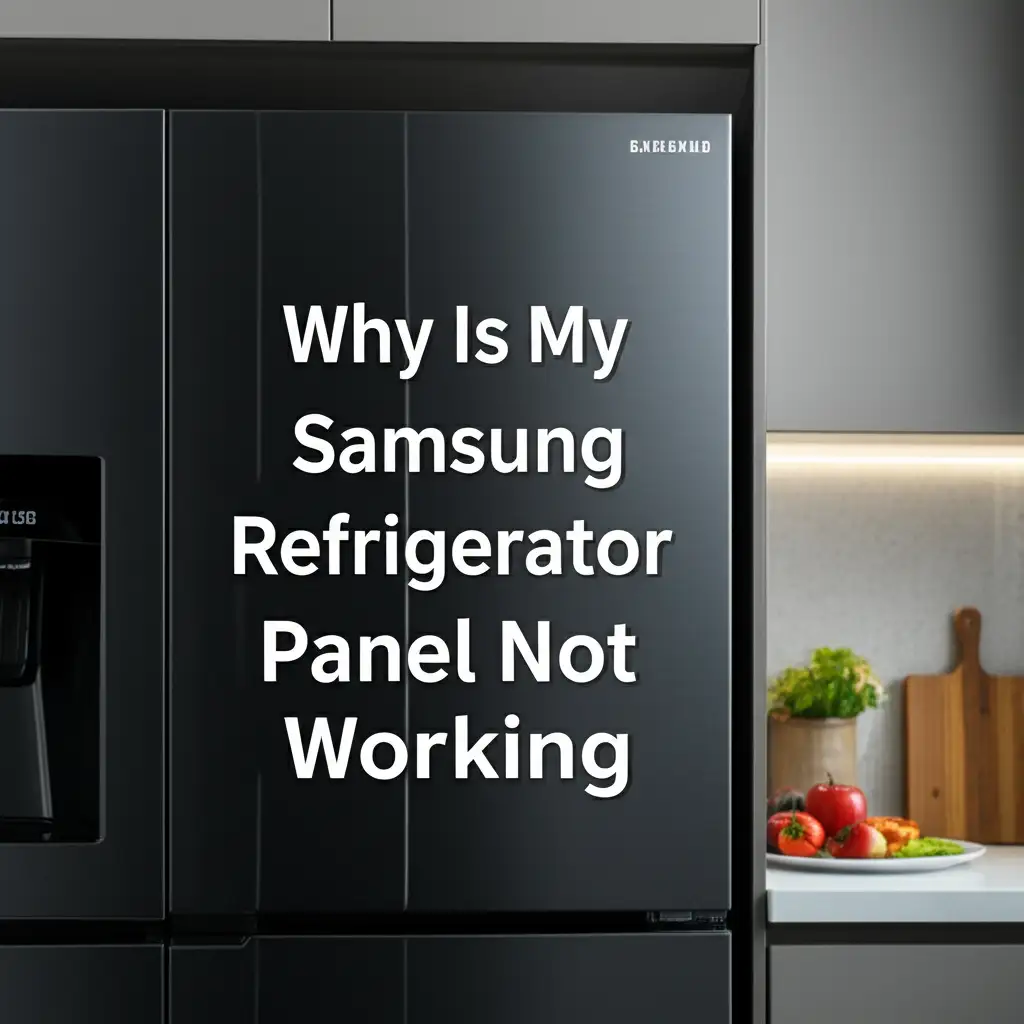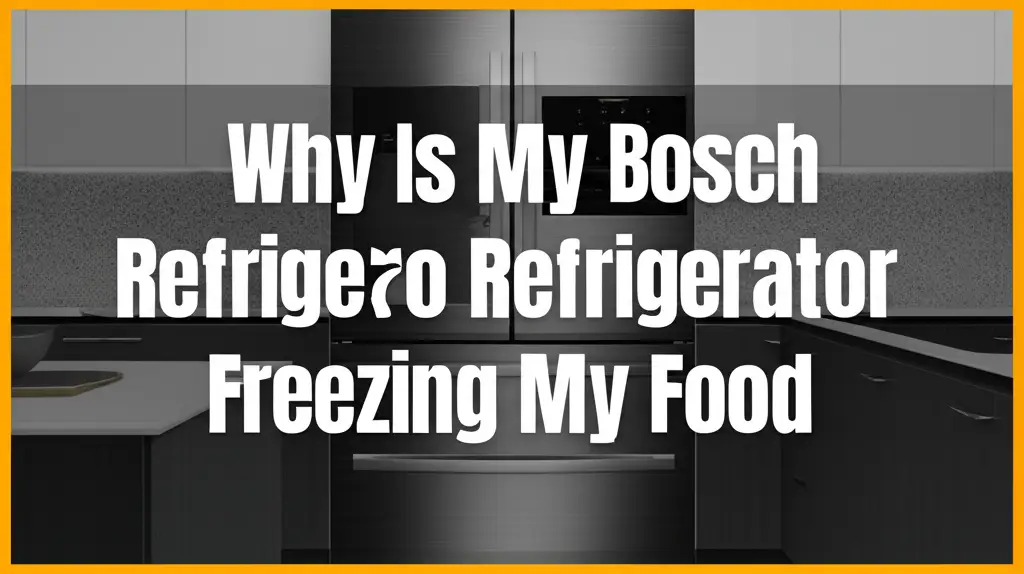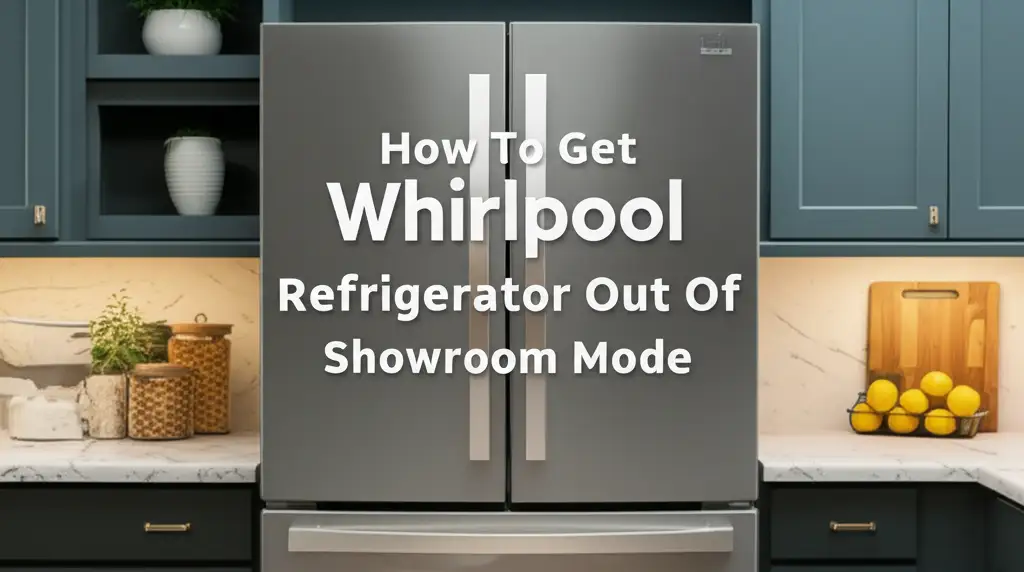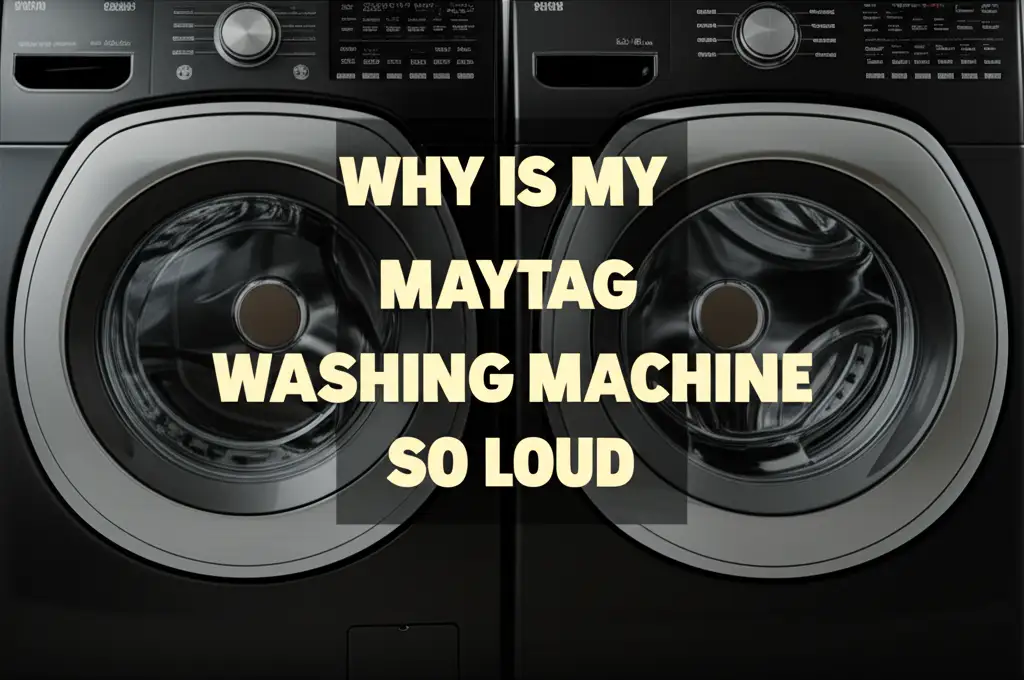· Todd Martin · Appliance Troubleshooting · 15 min read
How To Reset S E Code On Samsung Refrigerator
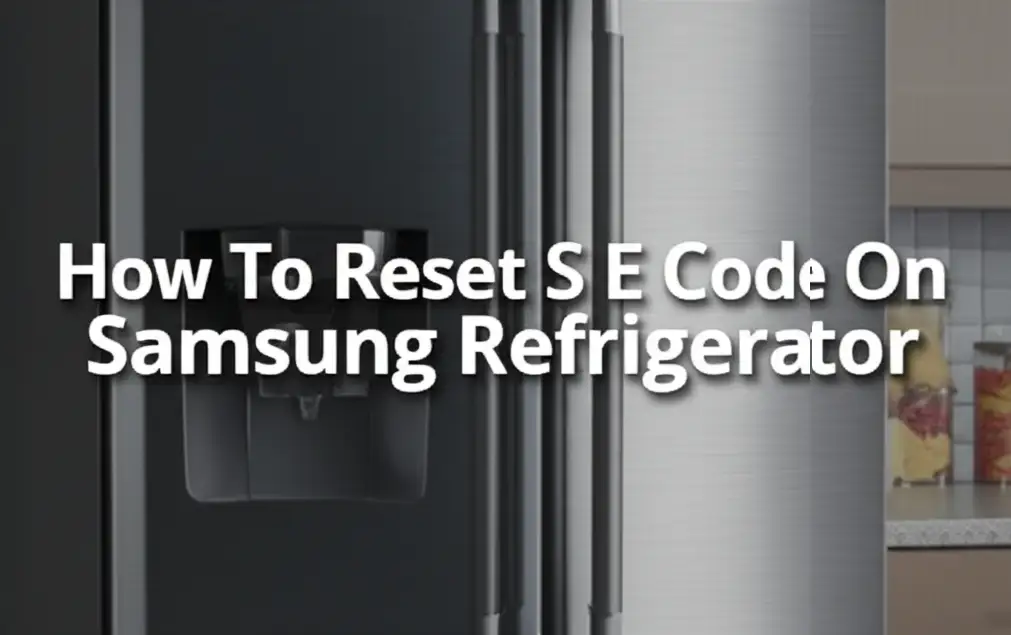
Resetting Your Samsung Refrigerator’s SE Code
Has your Samsung refrigerator displayed an “SE” or “5E” error code? I know how frustrating it is when appliances act up. This code indicates an issue, often with the defrost system or a sensor. You might see ice buildup in the freezer or notice temperature problems.
Many people face this issue. It stops your fridge from working correctly. This article will show you how to identify the cause and effectively reset the SE code on your Samsung refrigerator. We will cover simple resets, detailed troubleshooting for common problems, and maintenance tips. By the end, you will understand what causes this error and how to fix it.
Takeaway:
- The SE/5E code often signals a defrost system problem in Samsung refrigerators.
- Begin troubleshooting with a simple power reset of the appliance.
- Inspect the defrost heater, sensor, and thermal fuse for faults.
- Check for ice buildup on the evaporator coil and any drain blockages.
- Regular maintenance can help prevent this error from returning.
To reset the SE code on a Samsung refrigerator, first unplug the appliance for 5-10 minutes. This power cycle clears temporary errors. If the code persists, check the defrost system components, including the heater, sensor, and thermal fuse, for signs of failure or ice buildup.
Understanding the Samsung Refrigerator SE Code: What It Means
The “SE” or “5E” error code on a Samsung refrigerator signals a problem. This code typically points to an issue with the appliance’s defrost system. The defrost system prevents ice from building up on the evaporator coils. If too much ice forms, the fridge cannot cool properly.
This code might appear because of a faulty defrost sensor. It could also mean the defrost heater is not working. Sometimes, a thermal fuse fails, interrupting the defrost cycle. Understanding this code helps you pinpoint the problem area. It guides your repair efforts.
The refrigerator needs a clear evaporator coil. This coil absorbs heat from inside the fridge. Ice acts like an insulator on these coils. It makes the refrigerator less efficient. A persistent SE code means the system cannot remove this ice.
You might notice various symptoms with this code. Food might spoil faster. The freezer compartment could have excessive ice. You might hear strange noises from the appliance. All these point to a defrost issue. Addressing the SE code quickly is important. It prevents more damage to your Samsung refrigerator.
Initial Steps to Reset Your Samsung Refrigerator
When the SE code appears, a simple reset often solves the problem. This initial step is easy to perform. It helps clear temporary glitches in the control board. I always start here when my appliances show an error.
The first method involves a power cycle. Unplug your Samsung refrigerator from the wall outlet. Wait for 5 to 10 minutes. This allows the internal components to discharge fully. Plug the refrigerator back into the outlet. Check if the SE code reappears. Sometimes, this simple action is enough. It lets the system reboot. If your refrigerator is a side-by-side model, this reset method is similar to how to reset a Samsung side-by-side refrigerator after a power outage.
Another reset method uses the control panel buttons. Locate the “Energy Saver” and “Lighting” buttons on your display. Press and hold both buttons simultaneously. Keep holding them for about 10 seconds. Release the buttons once the display changes or beeps. This action forces a soft reset of the control board. It can clear the SE error code.
If neither of these resets works, do not worry. The SE code might indicate a more specific issue. These initial steps are just a starting point. They rule out minor electronic malfunctions. We need to look deeper into the defrost system if the code returns. Move to the next section for further troubleshooting.
Troubleshooting the Defrost System: Common SE Code Causes
The defrost system is key to a refrigerator’s operation. When the SE code shows, this system is usually the culprit. Ice buildup on the evaporator coils is a common sign of trouble. This prevents proper cooling and airflow. I have seen this issue many times.
Several parts contribute to the defrost process. The defrost heater melts ice from the evaporator coils. The defrost temperature sensor (thermistor) monitors coil temperature. It tells the control board when to start and stop defrost cycles. A thermal fuse acts as a safety device. It prevents overheating during defrost. If any of these parts fail, the SE code appears.
A faulty defrost heater cannot melt ice. This causes excessive ice accumulation. The refrigerator then struggles to cool. A defective defrost sensor might give incorrect temperature readings. This stops the defrost cycle from starting. If the thermal fuse blows, it cuts power to the heater. This also prevents defrosting.
You might also find ice in places it should not be. Water may collect at the bottom of the fridge or freezer. This indicates a frozen evaporator or blocked drain line. If your refrigerator is collecting water, this issue is similar to why is my Samsung refrigerator collecting water in the bottom. Understanding these roles helps diagnose the specific cause of the SE code.
Inspecting the Defrost Heater and Thermal Fuse
Now, let’s examine the components causing most SE code issues. We need to check the defrost heater and thermal fuse. These parts are usually in the freezer compartment, behind a panel. Always unplug the refrigerator first. Safety is important when working with electrical appliances.
You will need a screwdriver to remove the back panel of the freezer. Once the panel is off, you will see the evaporator coils. The defrost heater runs along these coils. It looks like a heating element. The thermal fuse is usually clipped onto the heater or a tube near it. It is a small, sealed component.
To test the heater, use a multimeter. Set it to measure resistance (ohms). Disconnect the heater’s wires from the circuit. Place one probe of the multimeter on each terminal of the heater. A working heater will show some resistance, typically between 10 and 40 ohms. If it shows infinite resistance (open circuit), the heater is faulty. It needs replacement.
Next, test the thermal fuse. Disconnect its wires. Touch the multimeter probes to each end of the fuse. A good thermal fuse should show close to zero ohms (continuity). If it shows infinite resistance, the fuse is blown. A blown fuse means it performed its job, often due to an overheating heater or a long-standing defrost issue. Replace both the heater and the fuse if either fails the test.
Remember, if your refrigerator is freezing food too much, it might be due to a faulty defrost system. This problem is similar to why does my Samsung refrigerator keep freezing my food. Replacing these parts often clears the SE code. It restores proper defrosting function.
Checking the Defrost Temperature Sensor (Thermistor)
After checking the heater and thermal fuse, turn your attention to the defrost temperature sensor. This sensor, often called a thermistor, monitors the temperature of the evaporator coils. It sends signals to the main control board. The board uses these signals to decide when to activate the defrost cycle. A faulty sensor gives incorrect readings. This can prevent the defrost heater from turning on.
The defrost sensor is usually attached to the evaporator coil. It is a small black or white cylinder with two wires. You will find it near the heater and fuse, behind the same freezer back panel. Carefully remove it from its clip. Note its position for reinstallation.
To test the sensor, you will need your multimeter again. Set it to measure resistance. Disconnect the sensor’s wires. Place one probe on each wire. The resistance reading of a thermistor changes with temperature. Most Samsung thermistors should read around 5,000 to 15,000 ohms at room temperature (around 70°F or 21°C). Refer to your specific refrigerator model’s service manual for the exact resistance values at different temperatures.
You can also test it by placing the sensor in a glass of ice water for a few minutes. The resistance should increase significantly as the temperature drops. If the sensor shows a reading that is wildly off, or if it shows infinite resistance, it is defective. A bad thermistor cannot tell the control board the correct temperature. This leads to defrost cycle errors and the SE code. Replacing a faulty sensor is a common fix. It restores communication between the coils and the control system.
Examining the Evaporator Fan Motor
The evaporator fan motor plays a crucial role in the refrigerator’s cooling system. It circulates cold air over the evaporator coils and throughout the freezer and refrigerator compartments. If this fan motor fails, airflow becomes restricted. This causes ice to build up on the evaporator coils, even if the defrost system is otherwise working. The lack of air movement can trigger the SE code. This is because the refrigerator struggles to maintain proper temperatures.
Symptoms of a faulty evaporator fan motor include unusual noises. You might hear a loud buzzing, grinding, or squealing sound coming from the freezer. Sometimes, the fan stops spinning entirely, leading to no noise at all. You might also notice that the refrigerator section is not as cold as it should be, while the freezer might have excessive ice buildup. The evaporator fan is typically located behind the back panel of the freezer, near the evaporator coils.
To inspect the fan, first unplug the refrigerator. Remove the freezer back panel. Visually check the fan blades. They should spin freely by hand. If the blades are stiff or if there is ice obstructing them, address that first. You can use a hairdryer on a low setting to melt any ice buildup. Be careful not to melt plastic parts. Once clear, try spinning the blades. If they still feel stiff, the motor bearings might be failing.
You can also test the fan motor’s electrical continuity with a multimeter. However, directly testing the motor can be tricky. Often, if the fan is making noise or not spinning freely after removing ice, it needs replacement. A broken fan cannot move air efficiently. This contributes to the SE code and cooling problems. Replacing a faulty fan motor ensures proper airflow and helps the defrost system work as intended.
Addressing Drainage System Blockages
A less obvious cause of the SE code can be a blocked drainage system. The defrost cycle melts ice from the evaporator coils. This melted water then drains through a tube down to a drip tray. If this drain tube becomes clogged, the water has nowhere to go. It refreezes, leading to ice buildup. This can mimic a defrost system failure and trigger the SE code.
The most common cause of a clog is food debris or ice. Over time, small particles can get into the drain tube. They freeze and block the path. This creates a cycle where melted water refreezes, adding to the blockage. You might notice water pooling inside the freezer. Sometimes, it leaks onto the floor. This issue is similar to why is my Samsung refrigerator leaking water from the filter if the leak seems internal.
To clear a blockage, first unplug the refrigerator. Access the freezer’s back panel as if checking the defrost heater. You will see the drain opening directly below the evaporator coils. Use a turkey baster or syringe to flush warm water down the drain hole. You can also use a small, flexible brush or pipe cleaner. Push it gently into the drain tube. This helps dislodge any ice or debris.
Once clear, pour a small amount of warm water mixed with baking soda into the drain. This helps clean and deodorize the tube. Ensure the water drains freely into the drip tray, usually located at the bottom of the refrigerator, behind the kick plate. If the drip tray has standing water or sludge, clean it out. A clear drainage system allows the defrost water to exit properly. This prevents ice accumulation that causes the SE code.
When to Call a Professional for Your Samsung Refrigerator
Sometimes, you try all the troubleshooting steps. The SE code still remains. This means the problem might be more complex. It might be beyond a typical DIY repair. I know it is tempting to keep trying, but safety comes first. A qualified professional can diagnose tricky issues.
If you have replaced the common parts and the code persists, the main control board might be faulty. Diagnosing a control board requires specialized tools and expertise. Replacing it is often expensive. It also requires careful handling. Without proper training, you might cause more damage.
Another reason to call a professional is for safety. Working with electrical components carries risks. If you are not comfortable or lack the right tools, stop. An expert has the knowledge to work safely. They also carry liability insurance. This protects you in case of an accident.
Consider the cost versus replacement. If your Samsung refrigerator is old, extensive repairs might not be worth it. A technician can give you an accurate repair estimate. This helps you decide. They can also explain the problem clearly. Getting professional help ensures the repair is done correctly. It prevents further problems. Do not hesitate to call Samsung service or a reputable appliance repair company.
Preventive Maintenance to Avoid Future SE Codes
Preventing the SE code from reappearing is better than fixing it. Regular maintenance keeps your Samsung refrigerator running smoothly. It saves you time and money. I always recommend these simple steps.
First, keep your refrigerator and freezer organized. Do not overload them. Overfilling restricts airflow. This forces the compressor to work harder. It can lead to ice buildup. Ensure adequate space around items. This allows air to circulate freely. Good airflow helps prevent ice formation.
Regularly clean the condenser coils. These coils are usually at the bottom or back of the refrigerator. They dissipate heat. If they are dirty, the fridge works less efficiently. This can indirectly stress the defrost system. Use a vacuum cleaner attachment or a coil brush. For a thorough clean, learn how to clean the refrigerator and even how to clean under a refrigerator. Make this a habit every six to twelve months.
Check the door seals (gaskets) regularly. Damaged seals allow warm, moist air into the refrigerator. This moisture turns into ice. Inspect the seals for cracks or tears. Test them by closing the door on a piece of paper. If you can pull the paper out easily, the seal might be faulty. Replace worn-out seals. This helps maintain proper temperature and humidity.
Finally, keep the drain pan clean. This pan collects water from the defrost cycle. If it gets too full or dirty, it can cause odors. It can also lead to blockages in the drain line. Regularly empty and clean it. These simple maintenance steps prolong your refrigerator’s life. They also help prevent the frustrating SE code from returning.
Frequently Asked Questions
What does SE code mean on Samsung refrigerator? The SE or 5E code on a Samsung refrigerator indicates an issue within its defrost system. This often means the refrigerator is having trouble melting ice buildup on its evaporator coils. Common causes include a faulty defrost heater, a bad temperature sensor, or a tripped thermal fuse. It can also point to issues with airflow or drainage.
Can I fix the SE code myself? Yes, often you can. Many SE code issues stem from minor electrical glitches or simple component failures that you can replace. Start with a power cycle reset. If that does not work, you can test and replace parts like the defrost heater, thermal fuse, or temperature sensor using common tools.
How do I perform a hard reset on my Samsung refrigerator? A hard reset involves completely removing power. Unplug your Samsung refrigerator from the wall outlet. Wait for at least 5 to 10 minutes to allow all residual power to drain from the system. Then, plug it back in. This process can clear temporary error codes and sometimes resolve software glitches.
What is the defrost sensor’s role? The defrost sensor, or thermistor, measures the temperature of the evaporator coils. It sends this temperature data to the refrigerator’s main control board. The control board uses this information to determine when to initiate and terminate the defrost cycle, ensuring that ice does not build up excessively.
How often should I clean the condenser coils to prevent errors? Clean your Samsung refrigerator’s condenser coils at least once every six to twelve months. Dirty coils reduce the refrigerator’s efficiency. They force the compressor to work harder, which can indirectly lead to problems like ice buildup and system stress, potentially triggering error codes like SE.
When should I call a technician for the SE code? You should call a professional technician if the SE code persists after you have tried all the common troubleshooting steps and replaced suspected faulty components. Also, seek professional help if you are uncomfortable working with electrical appliances or if you suspect a problem with the main control board, which requires specialized diagnosis.
Conclusion
Dealing with an SE code on your Samsung refrigerator can feel overwhelming. However, by understanding what this error means, you gain power. You can take control of the situation. We have covered simple power resets, which often clear minor glitches. We also walked through checking the essential defrost system components. These include the defrost heater, thermal fuse, and temperature sensor.
Remember, a little troubleshooting goes a long way. Many homeowners successfully resolve this issue themselves. Taking the time to inspect and potentially replace these parts saves you money. It also brings your refrigerator back to proper working order. If the problem persists, or if you feel uncomfortable, professional help is always a wise choice. Regular maintenance also keeps your appliance running smoothly. It helps you avoid future SE codes. I hope this guide helps you confidently tackle the SE code and keep your Samsung refrigerator performing its best for years to come.
- Samsung refrigerator repair
- SE error code
- refrigerator troubleshooting
- Samsung fridge reset
- appliance error codes
- fix Samsung refrigerator
- DIY appliance repair


